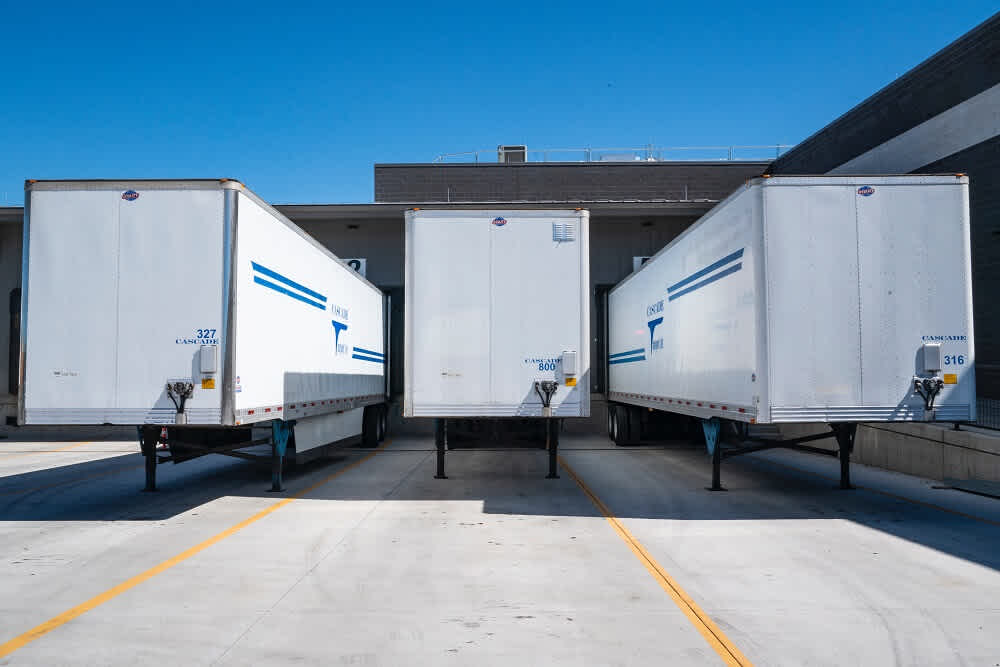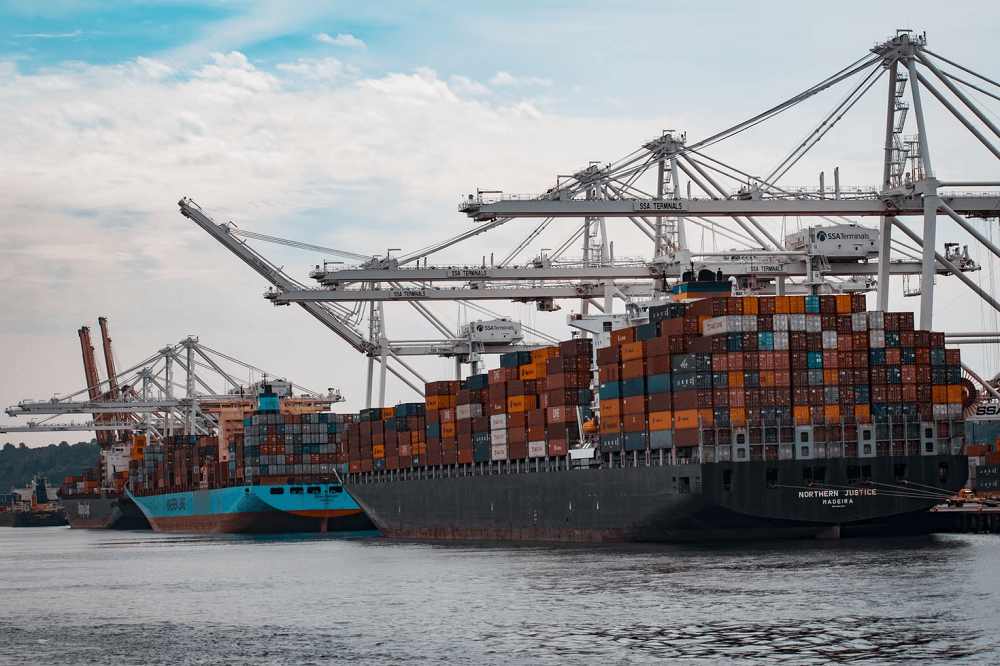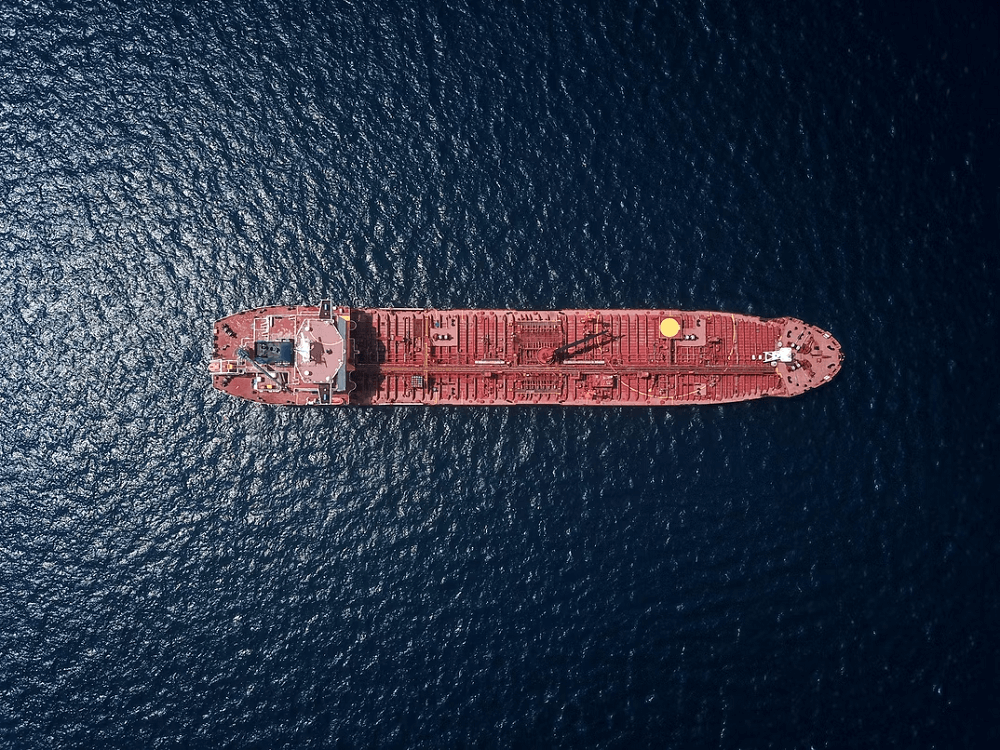
by Sam Franklin | June 13, 2022 | 7 min read
Understanding the Free Alongside Ship (FAS) Incoterm
Get fundedLast updated: July 08, 2022
Let’s face it, no seller enjoys combing through all the different shipping policies available to them when it’s time to send goods to their customers.
However, as shipping is one of the essential steps to finalising a sale, it’s always important to select the correct shipping option that suits both the buyer and seller.
The problem is that there are many shipping policies to sift through before finding something suitable. This is why in 1936, the International Chamber of Commerce came together to create Incoterms to categorise all the shipping policies in international trade.
One of the easiest Incoterms for sellers to complete is the Free Alongside Ship (FAS) Incoterm. This article will cover everything you might need to know to understand if FAS suits you.
If you’re looking for information on the other Incoterms, take a look at our Incoterms Overview section.
Table of Contents
- What is the Free Alongside Ship (FAS) Incoterm?
- Understanding the Free Alongside Ship (FAS) Incoterm
- When to use FAS
- When not to use FAS
- Advantages of FAS
- Disadvantages of FAS
- FAS vs other Incoterms
- Conclusion
What is the Free Alongside Ship (FAS) Incoterm?

Free Alongside Ship (FAS) is one of the eleven Incoterms created by the ICC.
Under the FAS Incoterm, the seller must arrange for the goods to be delivered at a port named by the buyer. In addition, the seller must be sure to deliver said goods next to a specific vessel chosen by the buyer to allow for a more effortless transfer.
In a nutshell, FAS requires the seller to deliver the goods right next to the buyer’s ship at the port of origin in the shipping process. The seller is responsible for handling the export clearance and licences. They are also responsible for all costs until the goods have been placed alongside the vessel.
As soon as the goods are delivered next to the vessel, the seller can consider their responsibilities complete and assume the sale has been finalised. The buyer is responsible for loading the freight onto the vessel, using the machinery on the ship itself. The buyer must also handle the carriage, import formalities and duty, and pay for the onward carriage at the destination port.
Understanding the Free Alongside Ship (FAS) Incoterm

In international trade, the term “free” means that the seller has an obligation to deliver the goods to a specific port. The term “alongside” means that the goods must be within reach of the nominated vessel’s lifting equipment. The seller must fulfil these two obligations to complete the sales contract.
For the seller, the goods can be considered as delivered when the seller’s ship arrives alongside the buyer’s ship at the origin port. The goods must be offloaded from the seller’s ship and cleared through customs, but they are not obligated to load them onto the vessel for the main carriage.
FAS only applies to sea and inland waterway transport and is very popular with bulk cargo such as grain. It is also an appropriate Incoterm for any shipment that involves delivering heavy machinery.
The named port of departure can be a loading dock or barge but cannot be a container terminal or a container freight station.
What do Free Alongside Ship (FAS) shipping terms include?
The shipping terms for FAS include the time and place for the delivery to occur. It also specifies which shipping vessel the goods need to be delivered alongside and breaks down the risk transfer between buyer and seller.
The following is a list of the standard terms seen in a FAS agreement:
Payment due to seller
Time and place of delivery
Which vessel do the goods need to be delivered next to
Who is responsible for loading
Which party takes the cost of freight and insurance (usually the buyer)
Seller’s responsibility
In Free Alongside Ship (FAS), the seller is responsible for:
Delivering goods safely at the agreed-upon date and point
Creating a sales contract and a commercial invoice
Export packaging and marking
Pre-carriage to terminal
Pre-shipment inspection
Delivery alongside the vessel at the port
Proof of Delivery to carrier
Providing notice to the buyer that goods have been delivered
Export formalities such as duty, taxes, and customs clearance
Buyer’s responsibility
In Free Alongside Ship (FAS), the buyer is responsible for:
Paying for the goods as dictated in the contract of sale
Providing the seller with relevant information required to fulfil obligations
Arranging carriage for international shipment
Loading on carriage
Delivery to the final destination
Unloading at destination
Import duty and taxes
Import clearance at the destination terminal
Insurance
Where is the risk transfer in the FAS Incoterm?
Risk transfer occurs in FAS when the goods are delivered alongside the nominated ship. The goods do not have to be loaded onto the buyer’s vessel for the risk transfer to occur. Instead, the goods must be placed alongside the ship, ready for loading.
If the vessel fails to arrive on time, the buyer bears the risk of loss or damage from the agreed date or at the end of the period agreed.
When to use FAS

Free Alongside Ship is typically used in bulk cargo shipments. It can be used for charters, boat carriers, heavy-lift ships, or anything where loading the vessel might be difficult and requires a lot of space. FAS should undoubtedly be used if the goods are delivered straight to a loading dock by the seller.
When not to use FAS
Sellers should not use Free Alongside Ship if the goods are delivered to a container yard. The goods must be placed alongside the nominated vessel at the named port. If the goods need to be delivered to a container terminal, then FCA will likely be a better Incoterm to use.
Additionally, FAS is not typically used for liner services that use small ports.
Advantages of FAS
One of the main advantages to the seller under FAS Incoterm is that they only need to place the goods alongside the named vessel for their responsibility to be completed.
FAS is also considered advantageous to the buyer as they have complete control from when the goods are delivered alongside their nominated shipping vessel. However, the buyer still has to ensure their vessel has the proper equipment to load the goods and is responsible for loading costs.
Disadvantages of FAS
The disadvantages of the FAS Incoterm primarily lean toward the seller. For example, heavy traffic or bad weather could cause the nominated shipping vessel to be delayed. In that case, the vessel failed to arrive on time, but the seller’s ship would still need to wait for the nominated vessel to dock before their obligations have been completed.
Additionally, the seller still needs to assist the buyer in acquiring relevant transport documents.
Lastly, paying for FAS by letter of credit could be tricky if there is no arrangement for the buyer to receive a bill of lading with the onboard notation.
FAS vs other Incoterms
The following is a quick comparison and summary of FAS against other popular Incoterms.
FAS vs FOB
Free On Board (FOB) places more obligations on the seller, such as unloading the truck at the origin port and paying charges at the origin port. The risk transfer occurs when the goods have been loaded on board the vessel.
FAS vs FCA
Free Carrier Arranged (FCA) differs from FAS as it requires the seller to unload the truck at the origin port. Additionally, the seller is not required to deliver the goods alongside the ship — however, the risk transfer in FCA is when the goods are loaded onto the nominated vessel.
FCA is a better Incoterm to use if the goods are in a containerised shipment being delivered to a terminal.
Conclusion
FAS is one of the relatively restrictive Incoterms to use as it requires sellers to deliver goods alongside a shipping vessel. This means that FAS can’t be used in most transportation methods in international trade. However, if the goods are delivered straight to the dock, and the main carriage uses sea freight, then FAS is the most optimised Incoterm to use.
Written by

Sam founded his first startup back in 2010 and has since been building startups in the Content Marketing, SEO, eCommerce and SaaS verticals. Sam is a generalist with deep knowledge of lead generation and scaling acquisition and sales.


